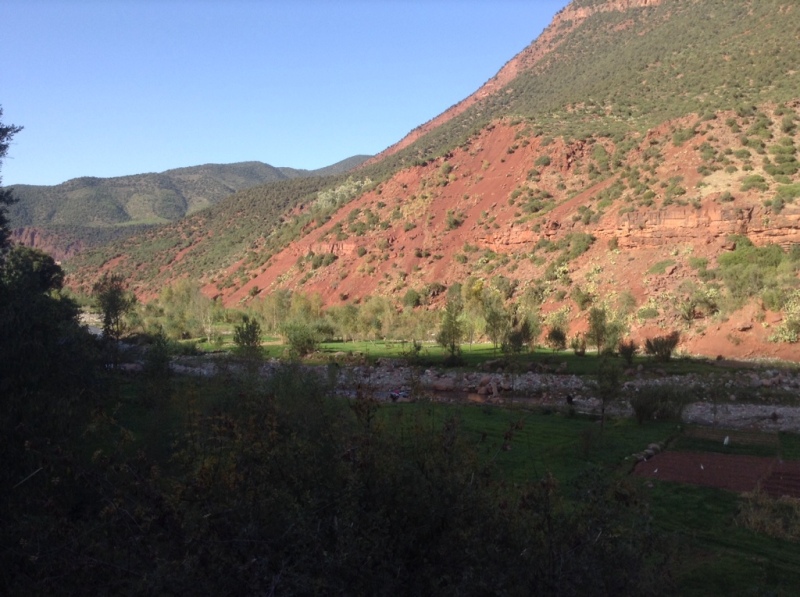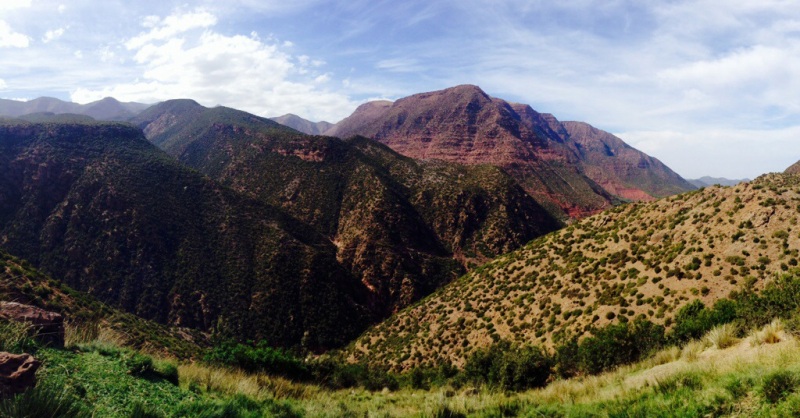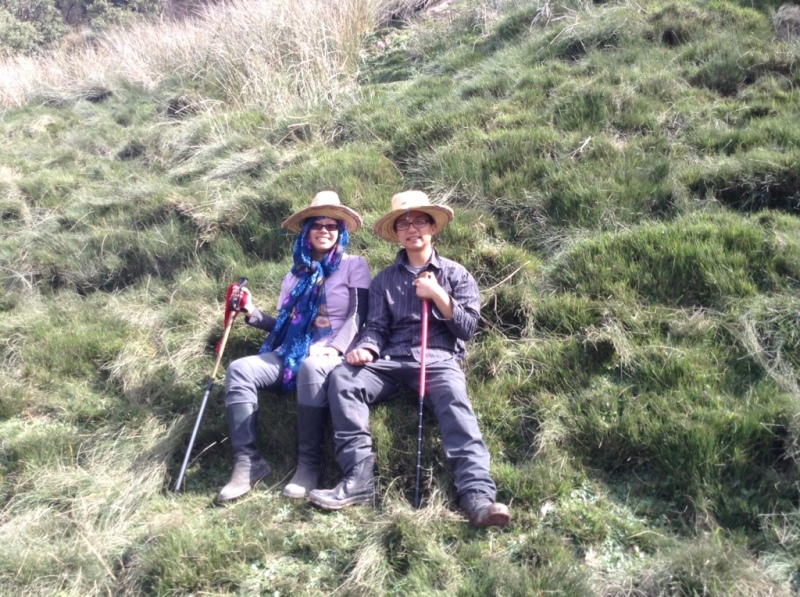by Karen
We used a wide variety of transportation in Morocco, from buses, planes, trams, vans, trains, and even camels. 😉
It is actually fairly easy to get around in Morocco between cities. The major cities are linked by train and bus (coach) routes, both of which are cheap and very comfortable. Getting to the desert cities, you may need to either rent a car (cheap, and negotiable if you rent locally, I met a Bulgarian couple who rented a car for 25€/day), or hire a driver. Gas is also relatively cheap in Morocco, much of the it comes from Saudi Arabia, and the countries’ monarchies have close ties.

Trains
ONCF (www.oncf.com) is the primary railway system in Morocco, similar to Amtrak in the US. The trains are very comfortable, clean, and fast. Tickets are easily purchased at kiosks in train stations, and you can purchase them on the day of your travel. You can purchase either First Class tickets or Second Class (Economy). The tickets are relatively cheap, we rode in First Class for all our journeys, and it never cost more than $30/person per ticket.

For longer journeys, like Fes-Meknes-Rabat-Marrakech, First Class seats are divided into compartments of six with a sliding glass door.

For shorter journeys, like Rabat-Casablanca, the seats are reminiscent of airplane cabins, but with much more ample legroom.

The one downside is that there’s a chance the stations may not be announced, so always ask an enployee if you’re not sure or check the platform signs. Our journey times were:
45 mins – Fez-Meknes
2 hrs – Meknes-Rabat
1.5 hrs – Rabat-Casablanca
Buses (Coaches)
We took the bus once, from Marrakech to Essaouira, and it ended up costing about the same as a train ticket. The bus we took belonged to the Supr@tours company, and was about a 4 hr ride. You will need to purchase a separate ticket for each piece of luggage going into the hold, which is just 5Dh. It was a nice clean bus, nothing special, similar to a Greyhound or Megabus.
Personal Drivers
For 5 days, we hired a personal driver to take us out into the desert (it was actually a part of our itinerary). While we’re not entirely sure how much it cost (I’m guessing it was expensive), part of our trip costs went directly into his stipend for food, gas, and lodgings, and did not include tip. The van we rode in was comfortable, although sometimes the driver liked to roll down the windows, letting dust & pollution flow into the van.
This might be a good option if travelling to remote & unfamiliar areas. You can also hire a taxi to drive you out, but again, you’ll need to negotiate on price, and consider that taxis are making 2 trips–one to drive you out, and another to drive themselves back home (so figure your tip accordingly). It generally would take us anywhere between 4-6 hours to get between the desert towns.


Trams
Of the cities we’ve visited during our Morocco trip, only Rabat & Casablanca had trams running through the cities. Rabat’s looks much newer, and covers all major attractions and landmarks, and also has tram stops in front of their two major railroad depots. Casablanca, to be fair, is a much larger city, and is still in the process of building new stations and lines. One way tickets are less than $1.




Airlines & Airports
We flew in via Marrakech on easyJet, and flew out from Casablanca on Air Arabia Maroc. Both airlines were comfy, and check-ins were very easy. Booking online with Air Arabia was a bit of a hassle, since the price kept fluctuating with every refresh, and my credit card kept being rejected. Eventually, I was forced to use a 3rd party travel site notorious for cheating its customers in order to book the tickets. But fortunately, everything went smoothly at the airport, even though we had to check-in via ticket counter.
One thing we noticed: both easyJet (at CDG) and Air Arabia (at CMN) did not weigh our bags. For all the hype they drummed up about baggage weight & size restrictions, it seemed like nobody cared. For reference, we are using the 55-liter Osprey Farpoint backpacks.
We’ve learned (from reading various guidebooks) that for the cheapest airfares to Morocco, always fly out of Paris, or anywhere in France. Contrary to popular belief (and to our surprise), Spain or Portugal are not the best places to fly into Morocco, due to lack of cheap flights and choices. Morocco is a major vacation destination for many French tourists (think Florida or Bahamas for the US), and there are always cheap deals from Paris airports. easyJet and Ryanair usually have flight deals to Morocco.
The major (cheapest) airports in Morocco are Casablanca, Fez, and Marrakech. Some (pricier) flights may also go to Agadir, Rabat, and Tangier. Marrakech’s airport is somewhat small and can be chaotic as everyone is funneled into the same arrival room. Casablanca’s airport is pretty westernized. Both airports are quite far from their town centers, it took us almost an hour for either direction.


Scooters/Mopeds
Just sharing an anecdote: a Maltese couple told me how they were able to rent a scooter in Marrakech for 20€ for the entire day, no license or verification needed, and despite the fact that the driver had a visibly broken ankle (limping & bandages). You can drive in the streets & alleyways, just try not to hit pedestrians or donkeys. 😉







































































You must be logged in to post a comment.